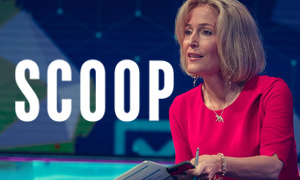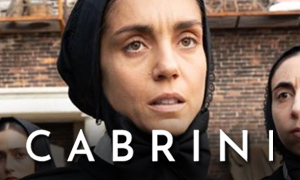Maid: History vs. Hollywood
Margaret Qualley
Born: October 23, 1994
Birthplace:
Montana, USA
Stephanie Land
Born: September 1978
Renamed Alex in the Series
Rylea Nevaeh Whittet
Emilia 'Story' Land
Renamed Maddy in the Series
Did Stephanie Land grow up in poverty?
Although Stephanie Land spent several years living below the poverty line in her late twenties as a single mother, the Maid true story reveals that she had actually grown up in a middle-class family.
What made Stephanie Land decide against having an abortion?
Like in the show, Land's boyfriend, whose name in the memoir is Jamie, was upset with her decision to keep the baby. She writes, "His initial tenderness in coaxing me to change the pregnancy abruptly changed when I told him I would not be doing that. I had known Jamie only four months, and his rage, his hatred toward me, was frightening." Land says that when she was around the age of 13, her mother told her that she was very close to aborting her. "It really affected me," she told NPR. "It made me feel kind of less wanted." She said that while she was worried about the situation she'd be bringing her own child into, she always wanted her daughter Mia.
How old was Stephanie Land when she became a single mother?
A Maid fact-check reveals that the real Stephanie Land was 28 when she was pregnant with her daughter Mia (today, Mia goes by her middle name, Story). It was an unplanned pregnancy and she wasn't married to the baby's father. They had only known each other for four months. Actress Margaret Qualley turned 26 during the filming of the Netflix Maid series.
Was the baby's father abusive?
Yes. Similar to what Alex (Margaret Qualley) experiences in the TV series, the true story behind Maid on Netflix confirms that Stephanie Land's relationship with the father of her daughter had become emotionally abusive. She said that he had kind of gradually built up to being violent. While they were arguing, he would punch the couch right next to her head. That prompted her to call the Domestic Violence Hotline. She refers to him as Jamie in her memoir and he is renamed Sean in the Netflix series and portrayed by Nick Robinson. -NPR
Did Stephanie Land call the police on her daughter's father?
Yes. After calling the Domestic Violence Hotline and reaching her usual caseworker, Stephanie was encouraged to call the police. Like Margaret Qualley's character in the Netflix series, she at first rejected the idea. However, Mia's father began to call repeatedly, telling Stephanie he wanted to come back and fix the window in the door, which he had punched a hole through. He told her he wanted to bring the landlord with him, a man who Stephanie says was "a very intimidating figure to me." It was then that she said, "No, I'm calling the police; I don't want you here." -NPR
A no-contact order was issued that covered Stephanie and her daughter, who at the time was around 9 or 10 months old. Stephanie eventually had the order adjusted so that Mia's father was allowed to spend time with her for a few hours a couple of times a week. Land said that her decision to bring the legal system into her situation had both its ups and downs. She said that in open court she was blamed for leaving a stable relationship. "I was seen as a bad person because I removed my daughter from a somewhat stable environment and now we were homeless," says Land, "when really I was leaving an abusive situation, but people didn't see it that way because it was emotional abuse." -MSNBC
In what part of the country did Stephanie Land live when she worked as a maid?
Land was living in Port Townsend, Washington when she became a single mother and worked maid service jobs to provide for her child. In the series, Alex (Margaret Qualley) lives in the similar-looking fictional town of Port Hampstead. The Netflix Maid series was shot in Victoria, British Columbia.
Is the Maid series on Netflix based on a book?
Yes. In researching the Maid true story, we discovered that the Netflix series was inspired by Stephanie Land's 2019 memoir Maid: Hard Work, Low Pay, and a Mother's Will to Survive.
How much did Stephanie Land earn cleaning houses?
Similar to home health agencies, house cleaning agencies keep more than half of what they charge clients, then their employees get what's left over. For example, Land says that when she started, the agencies charged clients $20 per hour and she was paid $8.55 an hour, which was right around the minimum wage in Washington state at the time. Eventually, the price for an hour of cleaning went up to $25 per hour.
After being with the cleaning agency for two years, Land's salary had gone up to $9.25 an hour. The agency only permitted her to work up to six hours a day, reasoning that due to the exhausting nature of the work, she could risk injuring herself. This meant that out of the 20 clients she had, she would clean two or three houses each day. She ended up working "anywhere from 20 to 25 hours a week." Land turned to government assistance to help make ends meet. Over time, she took on private clients in addition to the ones she had with the cleaning agency. She was eventually able to quit the agency entirely.
What types of government assistance did Stephanie Land have?
"I think, at one point, I had about seven all at once," the real Stephanie Land told NPR. She had housing assistance, Medicaid, a Pell Grant for college tuition, LIHEAP for help with utilities, WIC checks for supplemental nutrition for new mothers and children, child care grants, and was enrolled in the SNAP program for food stamps.
Did Stephanie Land live in a homeless shelter for a time with her infant daughter?
Yes. The first sentence of Stephanie Land's memoir states, "My daughter learned to walk in a homeless shelter." Land had been living with her daughter Mia's father for roughly the first six months of Mia's life. It was an abusive relationship. "He kind of forcefully asked us to leave," Land told NPR. After spending a few weeks living with her own father and stepmother, she left somewhat abruptly with Mia and found an opening at a local homeless shelter in Port Townsend, Washington.
It wasn't a homeless shelter in the traditional sense, but rather a span of six or seven two-room cabins that families could stay in as they tried to get back on their feet. Land and her daughter stayed in one of the cabins for 90 days, the maximum that was allowed. Like in the Netflix Maid series, there were strict rules, including no visitors, no alcohol, and there were routine drug tests. Guests also had to maintain a clean house, something that Land was used to doing given her line of work at the time.
Are the characters and locations in the Netflix series based directly on those in Stephanie Land's memoir?
No. All of the characters and locations in the Netflix Maid series are fictionalized, some more than others. While the waterfront community of Port Townsend from the memoir is hard to distinguish from its fictional counterpart Port Hampstead in the series, other characters and locations were changed more significantly.
Did Stephanie Land ever snoop around while cleaning?
Yes. When she first started working as a maid, Land says that she didn't snoop. However, that changed over time, partially due to the fact that she got bored while she was alone in a house. "I did in a couple," Land says of snooping in medicine cabinets. "...one in particular, it just seemed like they were always sick. And she worked as a nurse. And it just, like - so one time, I looked, and I'm like, well, how many antibiotics are they on, and, like, if it was for her or for him." -NPR
In her Vox article, Land says that she'd check how many pills a client took in two weeks in order to find out if their prescriptions had turned into addictions. "I found pills for everything: pain, anxiety, sleeplessness, depression, impotence, allergies, high blood pressure, diabetes." In one house, she found a topical testosterone cream that supplemented a lack of libido in women (the cream was applied to the body, not the genitals).
Land says that she would also look through piles of papers prior to straightening them. "I looked for secrets in the nightstands, for the story below the American dream."
Did Stephanie Land and her daughter rent a studio apartment with mold that made them sick?
Yes. The Maid true story reveals that this was not government-assisted housing but rather a place that Stephanie had found on her own. She said that at $550 a month, it was the only place she could afford at the time. During their time there, her daughter Mia was very sick with constant sinus infections, ear infections, and pink eye. Stephanie suffered from a very bad cough herself and "was constantly sick." She eventually realized it was the mold, especially after their illnesses cleared up when they moved. -NPR
Did Stephanie name the houses she cleaned?
Yes. For example, there was the Porn House, named for the numerous issues of Hustler in the nightstand and the bottle of lubricant that sat by the alarm clock. The wife and husband slept in separate rooms and there was a magnet on the fridge that read, "We're staying together for the cat." Next door was the Sad House. It belonged to an elderly gentleman who was often in the hospital. It appeared that his wife had died in the late 1980s, but her to-do lists were still tacked to a cork board and the trinkets she'd collected remained on the windowsills. On a wicker shelf sat two clay boxes. One contained the ashes of his wife and the other their eldest son. -Vox
Is Andie MacDowell's character, Paula, based on Stephanie Land's own mother?
Not exactly. In the Netflix series, Alex's undiagnosed bipolar mother (Andie MacDowell) is a hippie-artist living in a nearby artistic community by the water. This differs from the memoir, in which Stephanie Land describes her mother as living much farther away. She lived in Europe with a husband who was much younger (he was only seven years older than Stephanie). She describes her mom as being overweight and speaking with a fake British accent. She does not mention her as being undiagnosed bipolar. On an interesting side note, actress Andie MacDowell is the real-life mother of Margaret Qualley, who portrays Alex in the Netflix Maid series.
Did Stephanie eventually volunteer at a domestic violence center after having reached out to one?
Land told NPR that she did volunteer at a center, but she didn't meet with too many clients. What she did learn from speaking with her own advocate there, was that many clients who the center helped get away from abusive partners would go back to the person who had been abusing them. Land said that she realized that the job wasn't exactly the best fit for her and that she could be an advocate through her writing.
How long did it take Stephanie Land to earn a college degree?
As stated in the Netflix Maid series, the true story confirms that an unplanned pregnancy postponed Land's plans to go to college at the University of Montana and obtain a degree in creative writing. Instead, she cleaned houses for six years in Washington and Missoula and eventually took loans out to attend the community college in Skagit Valley. She then moved to Missoula and started to attend the University of Montana.
When Land first started at the University of Montana, she figured she'd go for a sociology degree so she could graduate and have job stability. However, she had dreamed of becoming a writer since she was 10 and knew she wouldn't be a happy mom if she gave up that dream. "I felt like if I could possibly do that, then it would show Mia that she could do the same," Land told NPR. She earned a Bachelor of Arts in Creative Writing and English from the University of Montana in Missoula. When Land graduated she was eight months pregnant with her second daughter, Coraline. Her oldest daughter, Mia, was six. In addition to student loans, she had paid for college with the help of Pell grants.
Where did Stephanie Land first publish her writing?
Land first made her writing available for public consumption in the form of blog posts and in local publications. Eventually, she got her writing published in larger Internet-based publications like The Huffington Post and Vox. She expanded her 2015 Vox article, titled "I spent 2 years cleaning houses. What I saw makes me never want to be rich.", into her bestselling memoir.
When did Stephanie Land get off welfare?
Land ended her dependence on welfare after she graduated from the University of Montana. She began working as a freelance writer and became a writing fellow at the Center for Community Change.
Did Stephanie Land find financial stability as a writer?
Prior to the publication of her memoir in 2019, Land had $50,000 in student loans to pay off and she was renting a home from her ex-mother-in-law. At the time, she had two kids she was taking care of by herself, as well as a shelter dog. It seems she was struggling somewhat and planned to go back into freelancing. Since then, the success of her book has led to more financial stability. She has also gotten married. -NPR
Is Stephanie Land currently married?
Yes. While fact-checking Maid, we learned that Stephanie Land had entered into another abusive relationship after the events in the series. It was a short-lived marriage that had become physically violent. Land called the police for help three months after getting married. Police officers photographed the bruises around her neck. She would eventually ask her husband to move out permanently and a divorce would soon follow. -The Guardian
Life would improve for Stephanie Land. Today, she is happily married, having tied the knot with Tim Faust in 2019. Together they have four children.
Overall, how accurate is Maid on Netflix?
When author Stephanie Land was trying to sell the movie/TV rights to her bestselling 2019 memoir, she met with 10 different production companies. "A lot of them wanted to do a movie and to keep it very tightly focused on the book and make it a true adaptation and that just didn’t sound great to me," Land told The Seattle Times. She didn't want the series to stick too closely to the book since the memoir is tightly focused on her and two of the years that she worked as a house cleaner.
Her tenth meeting was with actress Margot Robbie (representing her production company, Lucky Chap) and TV writer/director John Wells (Shameless, The West Wing, ER). "They offered to fictionalize the story and I really appreciate that because my story is tightly focused on me." This meant making characters who weren't heavily featured in the book, including her social worker and her boss, more integral to the story than they were in real life. Land says that this fictionalization also allowed more diversity to be brought into the series.
Though Maid is not a highly accurate representation of Land's own experience and the people involved, she described it in an Instagram post as "an obscenely authentic visual representation of what it's like to struggle to get by."
Link-to-Learn More:







